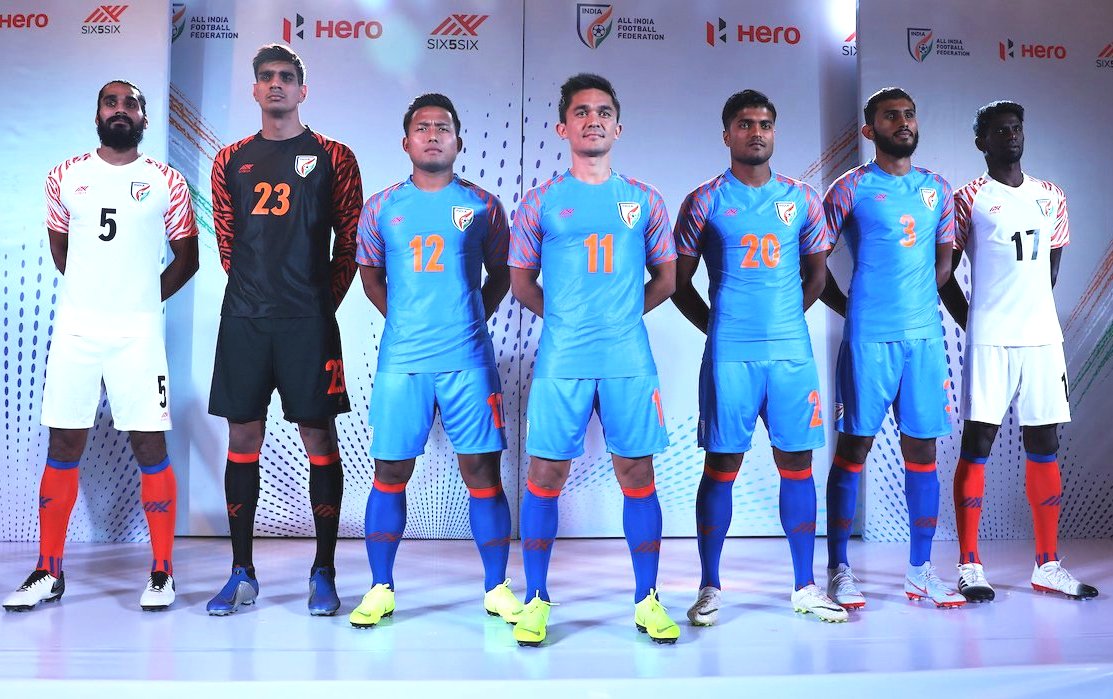Unpopular Opinion | India don’t deserve to qualify for World Cup anyway

Before the nation starts lamenting yet another World Cup miss for India, something that could come as early as next week, a more viable question would be if our nation even deserve to be on that stage. We are football fans first and what our team is playing right now isn’t football to begin with.
It has been quite conveniently sold to us that Indian football is on the rise and the enormous money being pumped into the Indian Super League and social media marketing have further played a quintessential role in making it believable. An enormous advantage of being ever-present in people’s phone has been that one could control the narrative before and after a match.
Hence, if one comes across the “never giving up” and “comeback” spirit of India across platforms like Facebook and Twitter soon after their horrendous display against Afghanistan, courtesy of an added time goal yet again, know that they are deceptive. The truth is that while the new crop of players might have quality on an individual basis, they come across as a disjointed group trying to collect and release a ball with no direction or guidance.
Have we really progressed?
India have hardly made an impact on the continental stage, let alone world stage, which highlights the fact that they have never had brilliant coaches at the helm at the national level. The likes of Bob Houghton and Stephen Constantine have surely managed to draw references every now and then for their singular victories against higher-ranked opponents, but they have got India nowhere apart from half-yearly newspaper headlines.
India defeated Zimbabwe 5-3 back in the 2003 Afro-Asian Games when they were 85 ranks above the Blue Tigers and people lost their minds. They were brought down to earth soon as India lost the final to an Uzbekistan U-21 side. A similar euphoria overtook the nation when India defeated Syria in the 2007 Nehru Cup final and extended it to the AFC Challenge Cup the next year.
Both the tournaments have become non-existent now and so is Indian team’s quality in football. However, the fact of the matter is, it has been more than a decade since then and India have won nothing of substance even in the sub-continental level. The likes of Tajikistan and North Korea defeated India in their backyard before Oman completed their comeback on the same soil, and the nation didn’t waste one second to go gaga over India’s stalemate away in Qatar.
However, like the 2003 Afro-Asian Games, the reality check came in a month with Indian being held by Bangladesh and Afghanistan, with both of them scoring first. If being stagnant is poor, going back a step is atrocious – something where Indian football currently is.
Are Igor Stimac’s complaints noteworthy?
There hasn’t been a single press conference between India’s draw against Bangladesh and their match against Afghanistan, where Igor Stimac didn’t bring up the concern that he wasn’t getting time to practice with his players with the Indian Super League cramping up the calendar. And while it sounds quite genuine at the ground level, just how effective it would be is anyone’s guess.
Going back a decade, some massive measures were taken after India qualified for the 2011 AFC Asian Cup, after 27 years. Houghton had decided to keep his players together for eight months from June 2010 as the players missed all their club matches – a risk that was taken by AIFF. India had finished last in the group stage then, losing to Australia, South Korea, and Bahrain in the process.
The Croatian’s other significant worry was the injuries that his squad dealt with during the ISL break. Now, it cannot be a sudden realization for people associated with football that injuries have been a part of contact sports since eternity. In fact, it has been such a hackneyed topic that reporters have stopped asking about unavailability in press-conferences ahead of international matches in Europe.
It is the job of a coach to churn out results with limited resources and a good manager does that very often – Sergio Lobera had to do in his very first ISL match this season while Robert Jarni has been doing it in almost every match. The absence of Sandesh Jhingan, Anas Edathodika, and Rowlin Borges was a big blow, but Stimac had more than enough options to tweak his way into a win against an Afghanistan side that had shipped in nine goals in two games.
Is Igor Stimac even worth the time?

 ©AIFF
©AIFFBefore dissecting Stimac’s tactics during matches and reasoning in press conferences, this way more important question is begging to be noticed. In the last two years or so, two coaches were appointed at the helm depending on their sheer ability to do power-point presentations – Unai Emery by Arsenal and Stimac by India. Look at where they are now.
Putting a team’s struggles under a wide scope and recognizing flaws and areas of improvements is a relatively easy task. The ground reality is way different and one that needs real knowledge of the sport. Under Stimac’s management, India have played nine matches, winning one, and drawing four of them – averaging 0.78 point per game. And to think that this man was brought in with the vision of preparing India for the 2026 World Cup is a petrifying nightmare.
His flawed tactics have been spoken about at length on numerous previous occasions and yesterday’s match was no exception. Starting with Sunil Chhetri as the sole striker would only work when if the wingers are fed more than enough times to play the ball inside, and in the absence of Jhingan and Borges, Halder could only give more defensive cushion more than anything.
The reason Manvir gave a lasting impact after coming on was because Afghanistan were playing on the counter and the FC Goa striker held up play in the attacking third. India were more direct in the last quarter than they were in the entire match and had Chhetri and Co. not missed some easy chances, the outcome could have been quite different.
Team selection has also been an issue with the Croatian. If Stephen Constantine was accused of favouritism over a few selected players, Stimac hasn’t been very different. Players like Michael Soosairaj and Jerry Mawihmingthanga have been really impressive in ISL and their repeated exclusion does ask a few questions.
Why is Sunil Chhetri still the centre-piece?
Yes, Sunil Chhetri’s 72 goals for the country makes him the highest active goalscorer from Asia and he is also the second-highest active international goalscorer behind Cristiano Ronaldo of Portugal in the world. It is also worth noting that his scoring rate has increased massively since turning 30, which indicates that he has been one of those players who would richer with experience. But, there are many things that Chhetri is not.
The 35-year-old isn’t the player to lead India anymore. His poor start to the ISL season with a brilliant set of players around him points to the fact that while his finishing has been the best in India and his holistic contribution has taken a major hit. He is often given the responsibility to come down in the middle and held spread the ball to wingers at the back. But, he lacks composure in his first touche and the number of times he has just given away the ball, isn’t new to us. Anyone with eyes on their head and a little bit of knowledge about football would know that Chhetri could at best be a super-sub now.
A defence heavy team like India needs to have the most prolific of scorers and creative of midfielders, aka players who can make even the toughest of chances that come their way count.
However, it would be wrong to assume that the AIFF has no idea of it. But, to them, the diminishing abilities of their skipper aren’t as important as the brand value of the striker. Chhetri has been the face of Indian football for long now, which AIFF has monetized upon very well and they would be milking his image as much as possible.
Igor Stimac not in tandem with ISL coaches
The idea of making top tier football more competitive, which could serve as a stage for the talent pool coming from lower divisions was a noble one but the brand of football played in those levels is vastly different.
Most of the ISL clubs, with their Spanish coaches, have resorted to a smooth passing football, something Stimac hasn’t been able to emulate in the national team. It is undoubtedly a difficult task, given most of the clubs have a couple of brilliantly composed foreign defenders and midfielders to help them, and India have to compensate that with either immense work rate or common tactics.
It isn’t a unique problem. Belgium had famously indoctrinated in the late 1990s and early 2000s that every youth team of the nation would play a 4-3-3 formation to take the 1v1 duels to a different level. Well, the other way of dealing with the problem, and one which offers a short-term solution would be to do what Vicente del Bosque did with Spain.
Despite having his own style of football, which had helped Spain win the Euro Cup in 2008, the former Real Madrid manager had no qualms embracing Pep Guardiola’s tiki-taka and also the core of the Barcelona team. Hence, the Non-Barcelona likes of Sergio Ramos, Xabi Alonso, Capdevilla, and more had to fall in line accordingly.
The lack of blueprint has been the crux of it all for Indian football, which further exacerbates the state of a regressive football team, who has no idea if they had gotten a proper coach and is holding on a player going downhill.

Comments
Sign up or log in to your account to leave comments and reactions
0 Comments